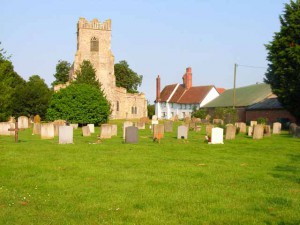[Editor's note: This post originally appeared in Vita Brevis on 6 June 2014.]
Over the last five months, Vita Brevis has featured a number of blog posts about the Great Migration Study Project and related subjects. Robert Charles Anderson, the project’s director, has written on the topic, as have Alicia Crane Williams and Roger Thompson. Bob’s posts tend to focus on his continuing research in this area, whether it is his trips to Salt Lake City to review a thorny question about identity or the latest literature on the subject as he prepares to write a book tentatively entitled Puritan Pedigrees: The Deep Roots of the Great Migration to New England. Other blog posts have delved into some of the larger issues and trends of the Great Migration: the populations that chose to travel across unwelcoming seas to an uncertain future in New England, and the waning importance of a “top-down” model of financing migration as a popular “bottom-up” model took its place.
Alicia’s work on the Early New England Families Study Project means that she is constantly considering the makeup of the Great Migration generation (1620–1640) in relation to the group (often including the offspring of the Great Migration passengers) that is the focus of her work: those people who married between 1641 and 1700. She has also written an introduction to the Great Migration project, one pointing out the rationale for including one member of a couple in one project or the other: the husband arrived in 1631, and so belongs to the Great Migration Study Project; the wife outlived her husband, remarried a man who arrived in 1642, and had a second family – they belong to the Early New England Families Study Project. Thus far she has three women who, while treated with a husband in the earlier series, merit inclusion – and their own entry – in her study project.
Roger – the author of several books on seventeenth-century New England towns – writes about the settlement of Charlestown during the 1630s, pointing out the way that the origins of the early settlers shaped their choices. As so many of them came from Stepney and Southwark, and belonged to trading families very much at home on the high seas, Charlestown residents remained connected to family networks in England in a way that many New Englanders did not. He points to three other places of origin for the first generation of Charlestown settlers: Dorset, Gloucestershire, and Bedfordshire, each with its own local culture transported bodily across the Atlantic.
I have written about my reading of the Winthrop Papers as I prepare to write a new genealogy of the Winthrop family. My blog posts have touched on Winthrop family dynamics, from AdamA Winthrop’s diary to Thomas Fones’ despairing account of his headstrong daughter Bessy’s dalliance with her cousin Henry2 Winthrop. Edward Howes’ charming letters to his college chum John2 Winthrop shrink the Atlantic, the Winthrop women (and their kinsmen) advertise for “serviceable” maidservants, and Lucy2 Downing flirts outrageously with Thomas Eyre, William Norton, and John Harwood, much to her parents’ bemusement. My most recent post looks at the long life of Governor Winthrop’s sixth son, Deane2 Winthrop (1623–1704).
Share this:
About Scott C. Steward
Scott C. Steward has been NEHGS’ Editor-in-Chief since 2013. He is the author, co-author, or editor of genealogies of the Ayer, Le Roy, Lowell, Saltonstall, Thorndike, and Winthrop families. His articles have appeared in The New England Historical and Genealogical Register, NEXUS, New England Ancestors, American Ancestors, and The Pennsylvania Genealogical Magazine, and he has written book reviews for the Register, The New York Genealogical and Biographical Record, and the National Genealogical Society Quarterly.View all posts by Scott C. Steward →
